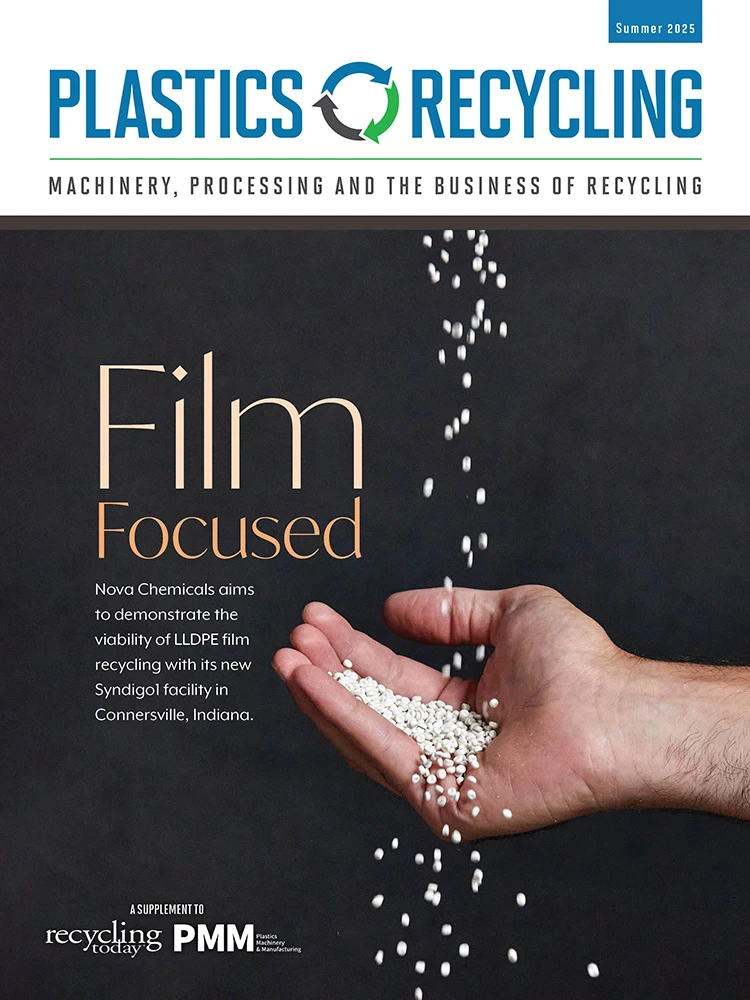
Avient Corp.’s Cesa Unify A4R polyolefin compatibilizer additive lets recyclers mix together incompatible polymers such as polypropylene (PP) and polyethylene (PE) into a homogenous flow and improves the mechanical properties of the products.
This addresses the degradation that occurs during recycling so recyclers can produce a higher-quality, more cost-effective material. It is suitable for a wide range of applications, including packaging and consumer products.
Avient, headquartered in Avon Lake, Ohio, demonstrated Cesa Unify A4R along with a second product, Cesa Nox A4R, which reduces nitrogen oxide (NOx) emissions during recycling and improves the color and odor of recycled material, at the Plastics Recycling Show Europe in Amsterdam in April.
According to the company, Cesa Unify A4R improves impact strength and ductility by maintaining stiffness and mechanical strength during recycling, resulting in mechanical properties similar to virgin polymers. Impact strength is improved by up to 50 percent and ductility by up to 100 percent.
“With more postconsumer recycled materials entering the value chain, brand owners, recyclers and converters are faced with new and increasing challenges,” Avient says in a news release. “This compatibilizer can help overcome some of those challenges.”
Flexible and rigid packaging widely used in food-contact applications often contains layers of PP and PE that are difficult for recyclers to separate. Cesa Unify A4R is aimed at cost-effective applications like these where it is important to maintain properties close to the original materials.

that occurs during recycling.
The additive can be combined with color into a single masterbatch and is available as pellets.
Avient also demonstrated its specialized antioxidant additive Cesa Nox A4R for reducing NOx emissions and lowering the environmental impact of recycling. The company says Nox A4R also maintains material quality.
The additive is designed to stabilize recycled material. It addresses the problems of oxygen, heat and shear degrading polyolefins, which lead to recycling defects such as discoloration, gels and black spots, as well as loss of melt strength. These defects cause processing problems later.
Nox A4R provides excellent performance at low dosage levels and is suitable for high-value polyolefin applications with recycled material content, according to the company. It can be added to material batches early in the recycling process or incorporated in virgin resin to prepare it for future recycling.
Avient said Nox A4R uses a let-down ratio (the ratio of masterbatch that is added to the resin) that is half of what is required for standard antioxidants. It is suitable for applications such as packaging, automotive parts and consumer goods.

Explore the Summer 2025 Plastics Recycling Issue
Check out more from this issue and find your next story to read.
Latest from Recycling Today
- Phoenix Technologies closes Ohio rPET facility
- EPA selects 2 governments in Pennsylvania to receive recycling, waste grants
- NWRA Florida Chapter announces 2025 Legislative Champion Awards
- Goldman Sachs Research: Copper prices to decline in 2026
- Tomra opens London RVM showroom
- Ball Corp. makes European investment
- Harbor Logistics adds business development executive
- Emerald Packaging replaces more than 1M pounds of virgin plastic





